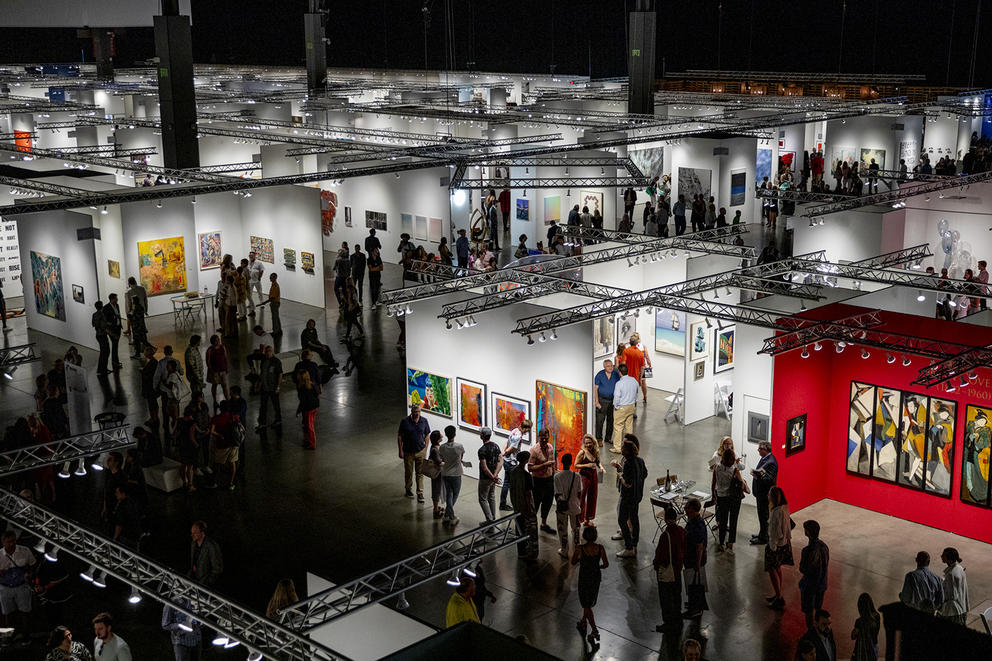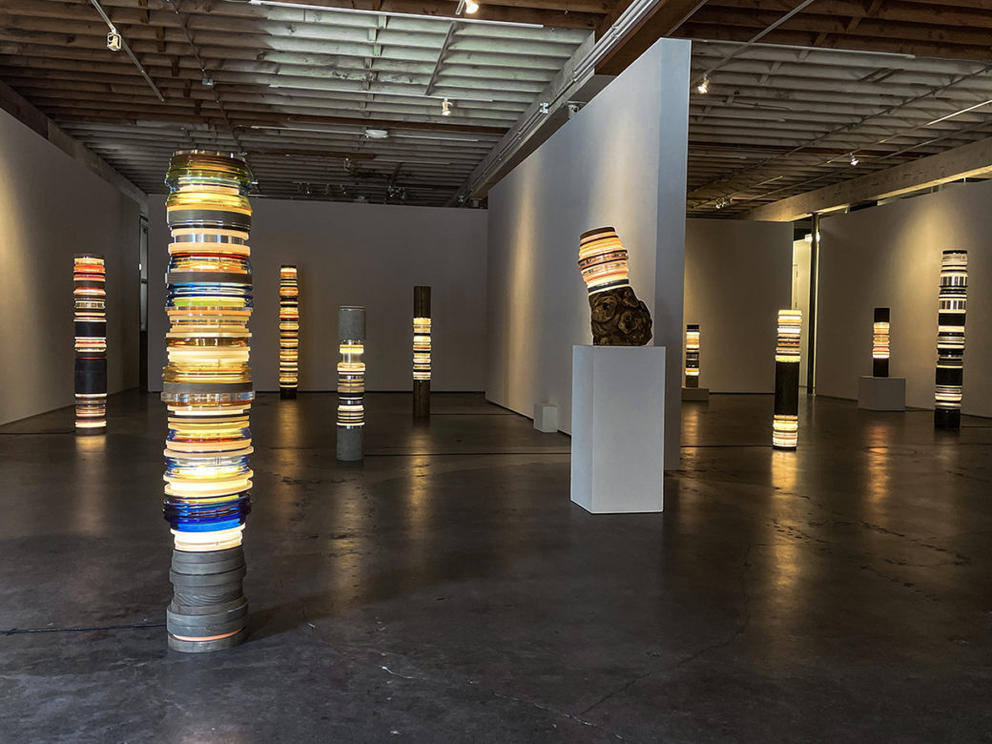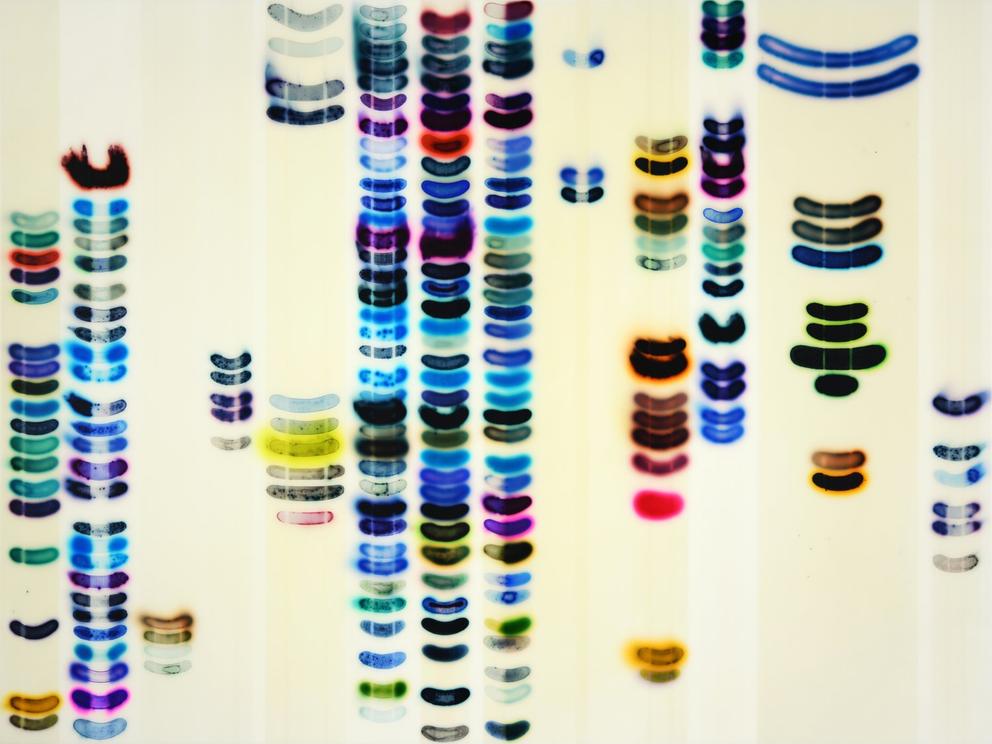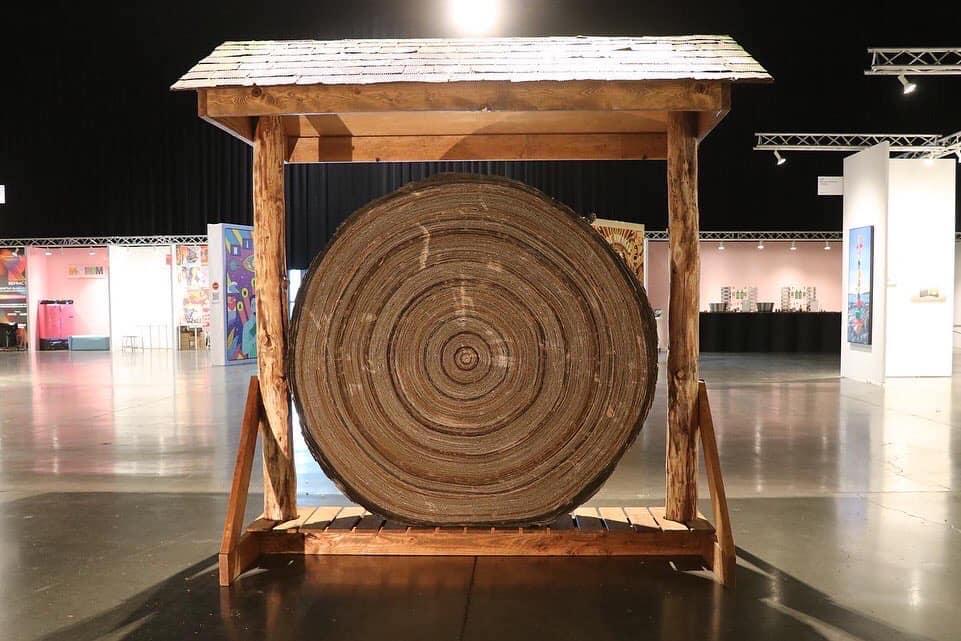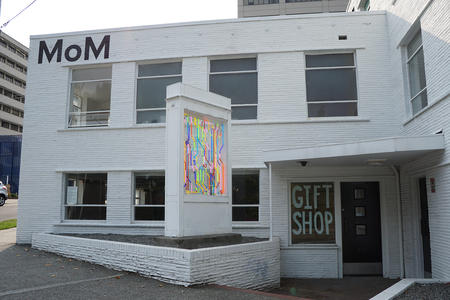In short: You are going to get your steps in, so make sure your fabulous art-going outfit includes comfortable shoes.
ArtSEA: Notes on Northwest Culture is Crosscut’s weekly arts & culture newsletter.
You can read all about Forest for the Trees (showcasing 80+ Northwest artists including Moses Sun, RYAN! Feddersen, Barry Johnson, Nikita Ares, Baso Fibonacci, Stevie Shao, Dan Webb and Jite Agbro) in the story Crosscut’s Margo Vansynghel wrote last week. It’s recommended reading, especially since Margo just won the prestigious Rabkin Prize for visual arts journalism (say congrats if you see her at the art fairs!).
As the more established event, Seattle Art Fair is known for its international flavor, with booths from Tokyo, Paris, Seoul, London and Toronto, as well as New York City, Los Angeles, San Francisco and Chicago. It always provides enlightening context to see what’s happening in the wider art world. But having written about Northwest arts for the last couple decades, I tend to root, root, root for the home team (sidebar: How ‘bout those Mariners?!) when wandering the miles of aisles at SAF.
Among the 76 galleries showing work in the dizzying array of tidy white cubes are 20 hailing from Washington — from Seattle’s 61-year-old Woodside/Braseth Gallery to Bellingham’s 2-year-old Geheim Gallery. I’ll share just a few of the things I’m eager to see in person.
Traver Gallery is showing an enticing mix (in booth B05), including figural sculptures crafted entirely from cast-off materials by Marita Dingus (recently profiled in our Black Arts Legacies project); intricate intarsia pieced together by Naoko Morisawa; ghostly glass hawks on tall pedestals by Jane Rosen; and the always impressive glass sculpture of Preston Singletary, including his 8-foot-tall cast-crystal “Killer Whale Totem,” selected as one of SAF’s 13 “public projects” situated all around the arena space.
I see a resonance between the amber glow of Singletary’s totem and the similarly tall, slim and luminescent “Light Stacks” by Los Angeles artist Matt Gagnon. These softly lit, cylindrical pieces contain stacked concrete, colored acrylic discs and wood, all of the same circumference, creating a kind of hybrid tree. Look for these, along with Seattle artist Philip Govedare’s seemingly acid-rain soaked landscapes, at the Winston Wächter booth (A05).
The “Light Stacks” in turn remind me of the mixed-media paintings by local artist Jaq Chartier, whose mysterious “infusions,” “tests” and “charts” look like scientific strips of isolated DNA — vertical rows of short blotted lines in distinct colors that reveal something deep inside ourselves. You can see several at J. Rinehart Gallery (C13), as well as explosions of color and musical movement by Seattle painter Moses Sun.
If many-layered hues feel like good news, seek out booth C07, where Georgetown’s Studio e is showcasing color-saturated clumps of dense flora by painter Gillian Theobald, the thickly graphic work of Warren Dykeman and appealingly offbeat ceramics by Emily Counts. See also: Edison-based i.e. gallery (C16), where Northwest painter Drie Chapek intrigues with smeary interior landscapes; and Gray Sky Gallery (D12), where Canadian artist Laura Van Horne entices with what look like slices of purple, green and blue geodes on paper.
And there is much, much more: Northwest sculptor Nancy Mintz’s large cellular shapes made from fine brass wire covered in Japanese paper (Geheim Gallery, B10). Greg Kucera Gallery’s (A07) wide range of offerings, including stunningly realistic wood sculptures by Dan Webb and Humaira Abid, and a limited edition woodcut print by Helen Frankenthaler (if you have $60,000 to spare). And at Woodside/Braseth (B13), the legendary Northwest School of art is represented in works by Mark Tobey, George Tsutakawa, Kenneth Callahan, Morris Graves and Paul Horiuchi.
Here we are and somehow I’ve only scratched the surface! Seattle Art Fair is also hosting artist talks, including: superstar multimedia artist Carrie Mae Weems discussing her diverse body of work (July 23, 4 p.m.); Seattle NFT Museum arguing “The Case for Physical Space for NFT Art” (July 24, noon); and Inye Wokoma, co-founder of Central District art space Wa Na Wari, discussing the abstract work of Romare Beardon (currently the subject of a fantastic show at the Frye Art Museum) with exhibit curator Georgia Erger (July 24, 3 p.m.).
Wokoma is also exhibiting an installation called “Separation Census,” in which he uses collage and graphs to track the displacement and migration of his family members from the Central District — along with the emotional consequences of these departures.
It’s presented as one of the Fair’s public projects, which also include a “constellation of 18 masks” exploring feminine stereotypes, by a new favorite artist of mine, Orly Anan, a neon art installation by former students of the now 50-year-old Pilchuck Glass School, a giant tree ring timeline by Seattle artist Clyde Petersen, and what looks to be a highly tempting pool of water surrounded by stones, courtesy of Portland artist Peter Gronquist. Let’s consider it a — strictly metaphorical! — invitation to dive into all this art.
Get the latest in local arts and culture
This weekly newsletter brings arts news and cultural events straight to your inbox.

